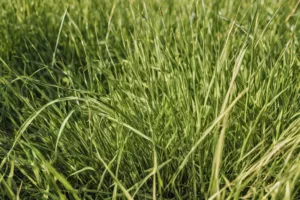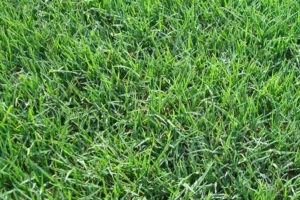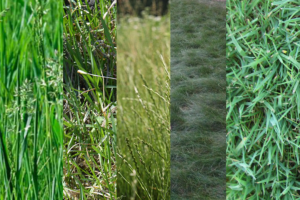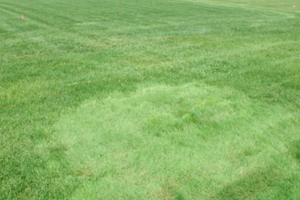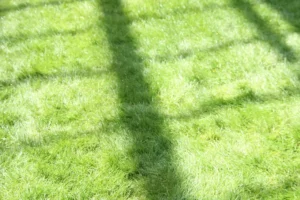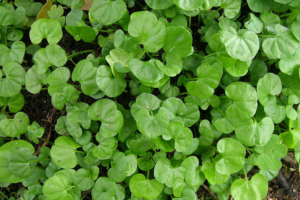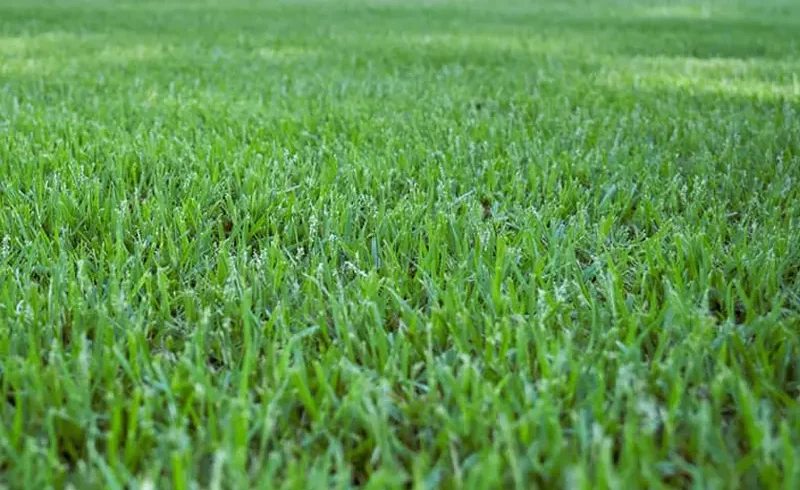
Introduction
Welcome to our comprehensive guide on Zoysia grass, a popular lawn choice across various climates due to its lush appearance and low-maintenance requirements. Whether you’re a homeowner looking to transform your yard, a landscaper seeking reliable options, or a grass enthusiast interested in learning more about different turf species, this guide is for you.
Zoysia grass, named after the 18th-century Austrian botanist Karl von Zois, is a warm-season grass known for its ability to withstand heat, drought, and heavy foot traffic. It’s a favorite among homeowners and landscapers alike for its lush carpet-like look, hardiness, and versatility. Zoysia grass is a trusted choice for various landscapes, from residential lawns to golf courses.
In this guide, we’ll delve into the history and origins of Zoysia grass, explore its key characteristics, and discuss its many benefits. We’ll also provide practical advice on cultivating and maintaining Zoysia grass, explore its uses, and address the challenges and controversies surrounding this grass species. Real-world case studies will offer valuable insights, and we’ll look ahead to the future of Zoysia grass in an ever-changing climate.
So, whether you’re considering Zoysia for your lawn or just curious to learn more about this grass species, read on for an in-depth look at Zoysia grass.
History and Origin of Zoysia Grass
Discovery and Naming
Zoysia grass, scientifically known as Zoysia Japonica, is named after Karl von Zois, an 18th-century Austrian botanist. Despite its European namesake, Zoysia grass is native to the coastal grasslands of southeast Asia and Australasia. Discovered in the early 1900s, its adaptability and resilience have allowed it to spread across the globe, becoming a popular choice for lawns in many different climates.
Introduction to the United States
The journey of Zoysia grass from the coastal regions of Asia to the lawns of the world began in 1911. USDA botanist C.V. Piper brought back a sample from Korea, recognizing the grass’s potential as a drought-tolerant lawn grass. This sparked interest in studying its characteristics and growth habits, leading to widespread cultivation.
Discovery of Different Varieties
Over the decades, different varieties of Zoysia grass have been discovered and cultivated. These include Zoysia Matrella, also known as Manila grass, discovered in the Philippines, and Zoysia Tenuifolia, found in New Guinea. Each variety has its unique characteristics, but all share the same primary advantages of the Zoysia family – drought tolerance, low maintenance requirements, and a beautiful, carpet-like appearance.
Zoysia Grass Today
Today, Zoysia grass is common in lawns across the United States, particularly in the southern states where warm-season grasses thrive. Its popularity continues to grow as more homeowners discover the benefits of this hardy, attractive grass species. From its humble origins in the coastal grasslands of Asia, Zoysia grass has become a global phenomenon.
Characteristics of Zoysia Grass
Appearance and Growth Habits
Zoysia grass is known for its fine to medium texture and beautiful, dense carpet-like appearance. Its leaves are typically light green to dark green, providing a lush, vibrant look for any lawn. One of the critical characteristics of Zoysia grass is its slow growth rate. While it may take a while to establish a lawn from seed or plugs, it also means that Zoysia requires less frequent mowing than many other grass types.
The growth habit of Zoysia grass is another notable characteristic. It grows horizontally, spreading through stolons (above-ground stems) and rhizomes (below-ground stems). This horizontal growth pattern allows Zoysia to form a dense, thick mat of grass, which can effectively crowd out most weeds and prevent soil erosion.
Types of Zoysia Grass
There are several types of Zoysia grass, each with its unique characteristics. Zoysia Japonica, or Japanese or Korean lawn grass, is the most common type in the United States. It’s known for its coarse texture and vigorous growth habit. Zoysia Matrella, or Manila grass, has a finer texture and is more tolerant of shade and salt. Zoysia Tenuifolia, often used in ornamental situations, has the finest leaf texture but is less tolerant of traffic and cold temperatures.
Each type of Zoysia grass has its advantages and is suited to different situations. However, all types share the critical characteristics of Zoysia grass – drought tolerance, low maintenance requirements, and a dense, carpet-like growth habit.
Climate and Soil Preferences
Zoysia grass is a warm-season grass, meaning it thrives in warm climates and dorms in cooler temperatures. It’s particularly well-suited to the southern United States but can also be found in northern regions where the summers are warm. Zoysia grass has good heat and drought tolerance and can withstand temperatures up to 120°F.
In terms of soil preferences, Zoysia grass is quite adaptable. It can grow in a wide range of soil types, from sandy to clay soils, and has a good tolerance for salty soils and sea spray, making it a good choice for coastal areas. However, Zoysia prefers well-draining soil with a slightly acidic pH, like all grasses.
Benefits of Zoysia Grass
Drought Tolerance and Water Efficiency
One of the critical benefits of Zoysia grass is its exceptional drought tolerance. This grass species has a deep root system that allows it to access moisture deep in the soil, enabling it to survive periods of drought. When subjected to prolonged dry conditions, Zoysia grass will go dormant, turning a straw-like color. However, once regular watering resumes, it will quickly return to its vibrant green color.
In addition to its drought tolerance, Zoysia grass is also water-efficient. Its dense growth habit reduces evaporation from the soil, and its slow growth rate means less water is used for new growth. This makes Zoysia grass an excellent choice for areas where water conservation is a priority.
Low Maintenance Requirements
Zoysia grass is known for its low maintenance requirements. Its slow growth rate requires less frequent mowing than other grass species. In fact, during the growing season, Zoysia grass typically only needs to be mowed once every one to three weeks, depending on the desired lawn height and the specific variety of Zoysia.
Additionally, Zoysia grass’s dense growth habit helps to crowd out weeds, reducing the need for herbicide applications. Its hardiness also means it’s less likely to suffer from diseases and pests, reducing the need for chemical treatments. However, like all grasses, Zoysia will benefit from regular fertilization to maintain its health and color.
Pest and Disease Resistance
Zoysia grass has good resistance to many common lawn pests and diseases. Its dense growth habit and hardy nature make it less susceptible to problems like dollar spots, brown patches, and rust. It’s also resistant to pests like billbugs and grubs. However, it’s worth noting that no grass is entirely immune to pests and diseases, and a healthy, well-maintained lawn is the best defense.
In addition to its resistance to pests and diseases, Zoysia grass is also resistant to wear and tear. Its dense, carpet-like growth makes it an excellent choice for high-traffic areas, and it can withstand the rigors of children’s play and pets. This makes Zoysia grass an excellent choice for family lawns, public parks, and sports fields.
Cultivation and Maintenance of Zoysia Grass
Planting Methods and Best Times to Plant
Zoysia grass can be established from seed, sod, or plugs. Each method has its advantages and disadvantages. Seeding is the least expensive method, but Zoysia grass seeds can take a while to germinate and establish. Sodding provides an instant lawn, but it’s more expensive and requires more preparation. Plugs are a middle-ground option, less expensive than sod but quicker to establish than seed.
The best time to plant Zoysia grass is in late spring or early summer when soil temperatures are consistently above 70°F. This gives the grass plenty of time to establish before the cooler weather of fall and winter. It’s essential to prepare the soil properly before planting, removing any existing grass or weeds and loosening the soil with a tiller. Adding a starter fertilizer at planting time can also help the grass get off to a good start.
Watering, Mowing, and Fertilizing Guidelines
Once established, Zoysia grass requires relatively little maintenance. However, like all grasses, it will benefit from regular watering, mowing, and fertilizing. Zoysia grass is drought-tolerant, but for the best appearance, it should be watered regularly during dry periods. A deep watering once a week is usually sufficient, but the grass may need more frequent watering during particularly hot or dry periods.
Mowing frequency depends on the desired lawn height and the specific variety of Zoysia. Most varieties should be mowed to a height of 1 to 2 inches, and mowing should be done when the grass reaches about 50% taller than the desired height. For example, if the desired height is 2 inches, the grass should be mowed when it reaches 3 inches.
Zoysia grass should be fertilized regularly to maintain its health and color. A slow-release granular fertilizer is usually the best choice, and it should be applied in the late spring and again in the late summer. Following the fertilizer manufacturer’s instructions is essential to avoid over-fertilizing, which can lead to problems like fertilizer burn.
Pest and Disease Management
While Zoysia grass is resistant to many common lawn pests and diseases, it’s not immune. Regular monitoring for signs of pests or diseases can help catch problems early before they become serious. Common pests of Zoysia grass include billbugs and grubs, and common diseases include dollar spots, brown patches, and rust.
If pests or diseases are detected, it’s essential to identify and treat the problem appropriately. This may involve applying a pesticide or fungicide, adjusting watering or fertilization practices, or in severe cases, reseeding or resodding affected areas. A healthy, well-maintained lawn is the best defense against pests and diseases.
Uses of Zoysia Grass
Residential Lawns
Zoysia grass is popular for residential lawns due to its attractive appearance and low maintenance requirements. Its dense, carpet-like growth provides a lush, green surface perfect for barefoot walks and backyard games. Its slow growth rate means less frequent mowing, and drought tolerance can lower water bills.
In addition to its aesthetic appeal, Zoysia grass’s dense growth habit can help prevent soil erosion, making it a good choice for sloped areas. Its resistance to wear and tear also makes it suitable for high-traffic areas, such as play areas and paths. However, it’s worth noting that Zoysia grass goes dormant in cooler weather, turning a straw-like color until warmer temperatures return.
Golf Courses and Sports Fields
Zoysia grass is also a popular choice for golf courses and sports fields. Its dense growth and resistance to wear and tear make it able to withstand the heavy foot traffic these areas typically receive. Its slow growth rate can also reduce the need for frequent mowing, a significant advantage for large areas like golf courses and sports fields.
Different varieties of Zoysia grass may be used in different parts of a golf course. For example, Zoysia Matrella, with its delicate texture and high density, is often used for fairways and tees. With its coarser texture and faster growth rate, Zoysia Japonica may be used for roughs. The variety used will depend on the specific needs and conditions of the golf course or sports field.
Erosion Control
Zoysia grass’s dense growth habit and robust root system make it an excellent choice for erosion control. It can be used on slopes and embankments to help stabilize the soil and prevent it from being washed away by rain or wind. Its salt and sea spray tolerance also makes it a good choice for coastal areas, where erosion can be a significant problem.
In addition to its use on slopes and embankments, Zoysia grass is sometimes used in rain gardens. These are landscaped areas designed to collect and absorb rainwater, reducing runoff and helping to protect local waterways from pollution. Zoysia grass’s ability to tolerate wet conditions and its dense growth habit, which helps to filter the water, make it a good choice for these applications.
Challenges and Controversies Surrounding Zoysia Grass
- Invasiveness: Zoysia grass is known for its invasive nature. This characteristic allows it to crowd out all other species in the lawn when planted, which can be beneficial for maintaining a uniform lawn. However, this also means it can easily invade flower beds and spread to neighboring lawns, causing potential disputes and extra work to control its spread.
- Temperamental Color: Zoysia grass is sensitive to changes in weather. In consistently warm climates, it maintains a lush green color. However, in regions where the climate varies, the grass can quickly turn green to brown at the first sign of cool weather. This can result in an unsightly lawn for most of the year.
- Slow Growth: Zoysia grass grows slower than many other grass species. While this means less frequent mowing, it also implies that the lawn will have a more challenging time recovering from damage and heavy wear. This can be a disadvantage for lawns that see a lot of activity or where the grass gets damaged due to pests, diseases, or harsh weather conditions.
- Zoysia Patch or Rhizoctonia Large Patch: Zoysia grass is prone to a disease known as the Zoysia patch, which can kill the grass and give it a rust color as it dies. This disease can cause significant damage to the lawn and may require intervention to control its spread and impact.
- Thatch Problems: Zoysia grass is prone to thatch problems. Thatch is a layer of dead grass and other organic matter that can build up between the green grass above and the soil below. While less mowing is required with Zoysia grass, more effort may be needed for thatch control, which can be labor-intensive.
- Difficulty in Removal: Once established, zoysia grass is nearly impossible to remove. If you decide to plant Zoysia grass, you commit to maintaining it long-term. This can be a significant challenge for those who may want to change their lawn type in the future.
In warm weather, Zoysia grass problems are fewer, and the benefits are more significant, making this grass worth considering. However, planting a Zoysia grass lawn in cooler climates can lead to more problems than benefits.
Case Studies
Zoysiagrass in Residential Lawns
Zoysiagrass is a popular choice for residential lawns due to its dense growth habit and ability to withstand traffic. It provides a lush, green carpet that is aesthetically pleasing and functional. Homeowners appreciate its low maintenance requirements, as it requires less mowing and fertilization than other grass species. However, it’s important to note that Zoysiagrass has a slow growth rate, which means it may take some time to establish an entire lawn.
In a case study of residential lawns in Florida, Zoysiagrass demonstrated excellent drought tolerance. Even in periods of low rainfall, the grass maintained its green color and did not show signs of stress. This makes it an ideal choice for homeowners in areas prone to drought. However, it’s important to remember that while Zoysiagrass is drought-tolerant, it still requires some water to maintain its health and appearance.
Zoysiagrass in Golf Courses
Zoysiagrass is also a popular choice for golf courses due to its ability to withstand heavy traffic and low maintenance requirements. It provides a dense, uniform playing surface that can be mowed to a low height, making it ideal for fairways and tees. Additionally, its slow growth rate means it requires less mowing, which can save time and resources for golf course maintenance teams.
In a case study of golf courses in Florida, Zoysiagrass demonstrated excellent performance. It provided a consistent playing surface throughout the year, with minimal disease problems. The grass could withstand heavy traffic from golfers and golf carts, maintaining its color and density even during periods of low rainfall. This makes it an excellent choice for golf courses in warm climates with limited water resources.
Zoysiagrass in Sports Fields
Zoysiagrass is suitable for sports fields due to its dense growth habit and ability to withstand heavy traffic. It provides a durable playing surface that can withstand the wear and tear of sports activities. Its slow growth rate also means it requires less mowing, which can save time and resources for sports field maintenance teams.
In a case study of sports fields in Florida, Zoysiagrass demonstrated excellent performance. Despite the heavy traffic from sports activities, the grass maintained its density and showed no wear. Even in periods of low rainfall, the grass maintained its green color and did not show signs of stress. This makes it an excellent choice for sports fields in warm climates with limited water resources.
The Future of Zoysia Grass
Zoysia Grass in Golf Courses
The future of Zoysia grass is already unfolding, with its use in golf courses becoming more prevalent. David Doguet, president of Bladerunner Farms and a recognized expert on Zoysia grass, has introduced four new varieties suitable for use as greens grasses. Primo, Lazer, Prizm, and Bella varieties are designed to provide a superior putting surface that can be mowed to a height of just 1/8 inch.
Using Zoysia grass in golf courses is not just a trend but a reality today. For instance, the Oak Hills Country Club course in San Antonio, Texas, underwent a complete renovation to Zoysia grass, marking a significant shift in the golfing industry. The renovation project, which was close to completion at the time of the report, is a testament to the growing acceptance and preference for Zoysia grass in professional golf courses.
Zoysia Grass in Residential and Commercial Landscaping
The future of Zoysia grass also looks promising in residential and commercial landscaping. It’s low maintenance requirements and aesthetic appeal make it an attractive option for homeowners and commercial property managers. As more people become aware of the benefits of Zoysia grass, its popularity is expected to continue to rise.
Furthermore, ongoing research and development efforts will likely lead to introducing new Zoysia grass varieties with improved characteristics. These advancements could further increase the grass’s suitability for various applications, thereby expanding its potential uses in the future.
Conclusion
The Versatility of Zoysia Grass
Zoysia grass has proven to be a versatile and resilient grass species, suitable for various applications. From residential lawns to golf courses, and even for erosion control, Zoysia grass offers numerous benefits that make it a preferred choice for many. Its dense growth habit, low maintenance requirements, and resistance to pests and diseases are just a few characteristics that have contributed to its popularity.
However, like any plant species, Zoysia grass has its challenges. Its slow growth rate, potential for thatch buildup, and the difficulty of removing it once established are some of the considerations that need to be considered. Despite these challenges, the benefits of Zoysia grass often outweigh the downsides, especially in suitable climates and with proper care and maintenance.
Looking Forward
The future of Zoysia grass looks promising. With ongoing research and development, new varieties of Zoysia grass are being introduced that offer improved characteristics and expanded potential uses. As more people become aware of the benefits of Zoysia grass, its use is expected to continue to grow.
Whether you’re a homeowner looking for a low-maintenance lawn option, a golf course superintendent seeking a resilient playing surface, or a landscaper needing hardy grass for erosion control, Zoysia grass is a worthy contender. As with any landscaping decision, it’s essential to consider your site’s specific needs and conditions to determine if Zoysia grass is the right choice for you.

Bob Green, a passionate lawn care enthusiast with over two decades of landscaping experience, is this website’s proud owner. His vast knowledge of horticulture and dedication to helping homeowners maintain beautiful lawns are reflected in the valuable content he shares on his platform. John has always been interested in Agrostology.









